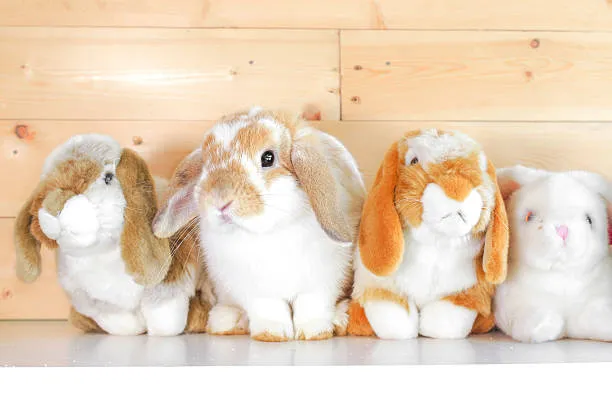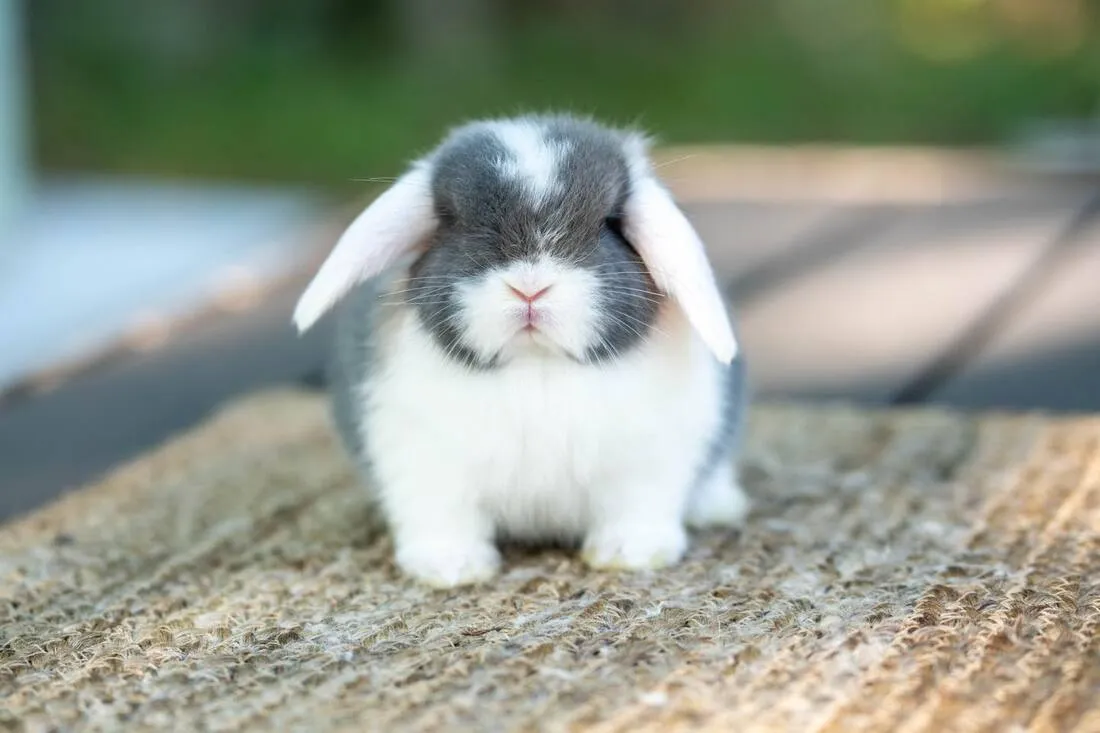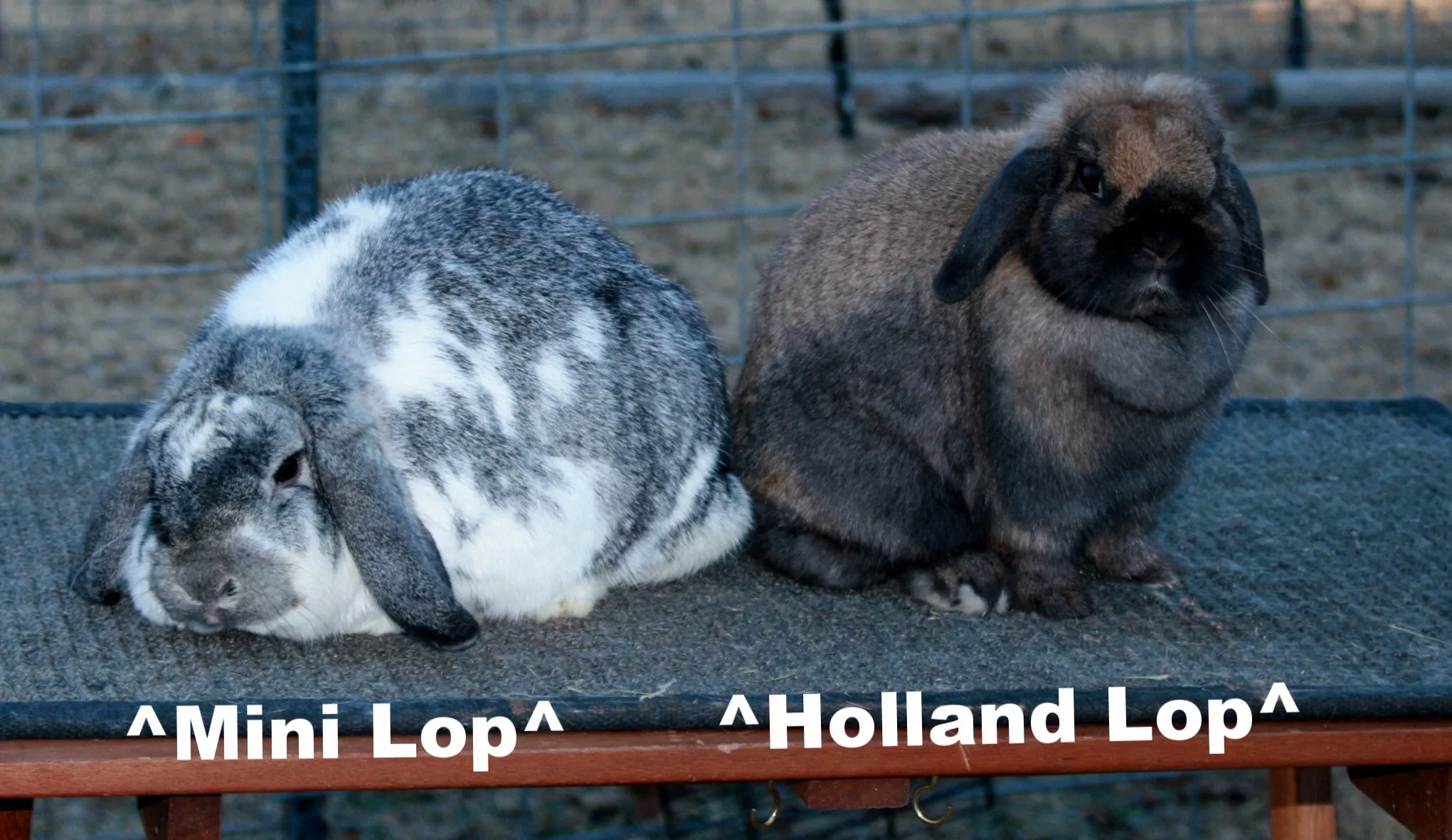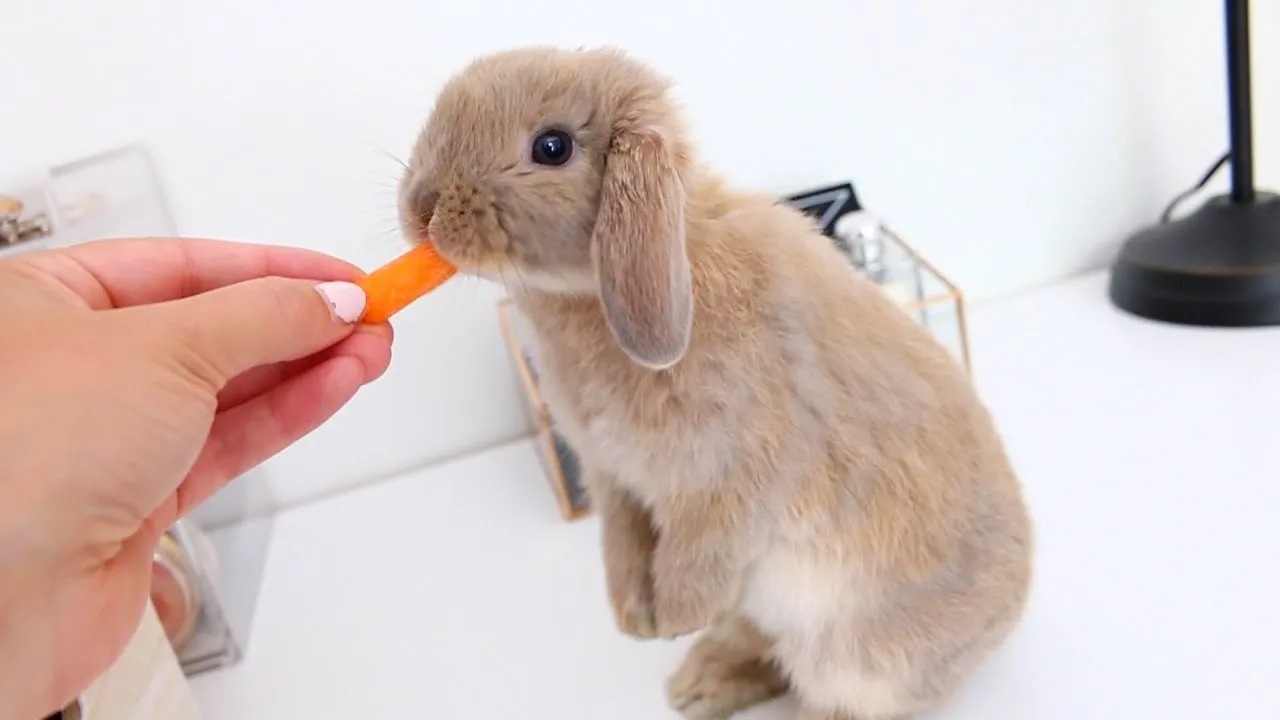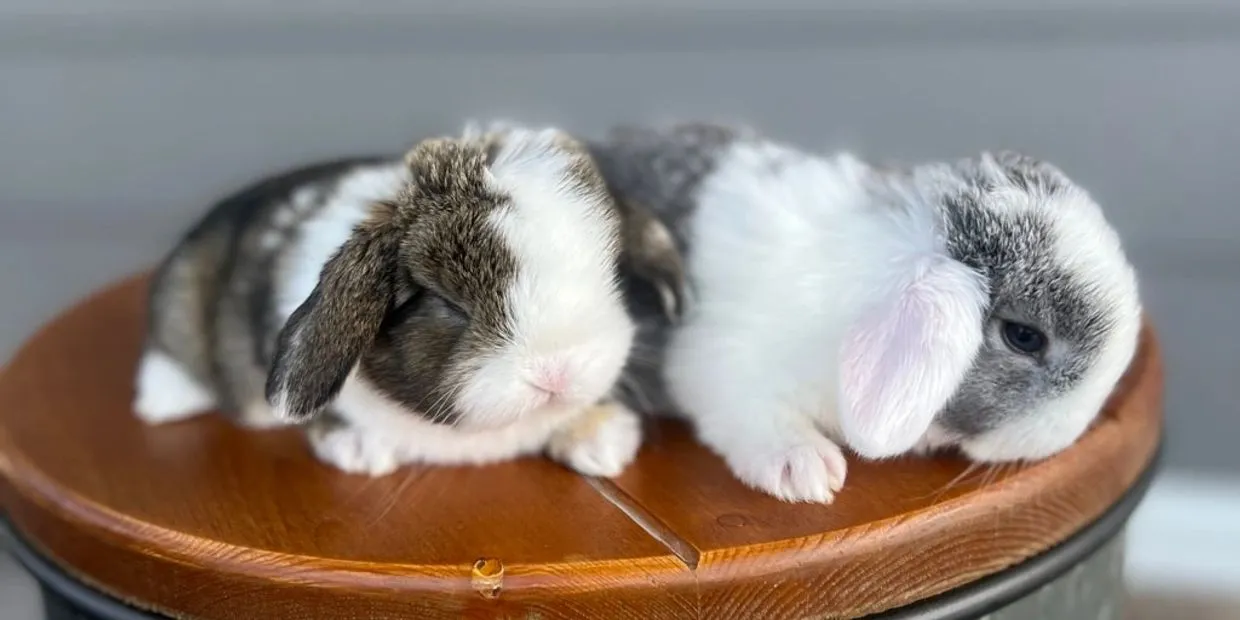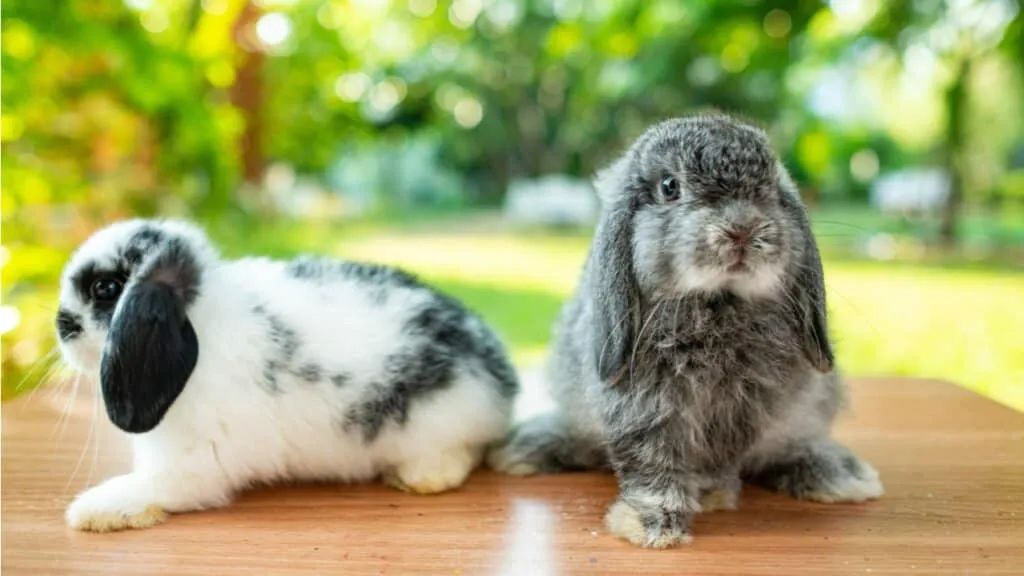The Holland Lop Characteristics are among the most recognised and favourite breeds of rabbits in the world. With floppy ears, compact bodies, and an affectionate nature, these rabbits have already won over the hearts of numerous breeders and pet owners.
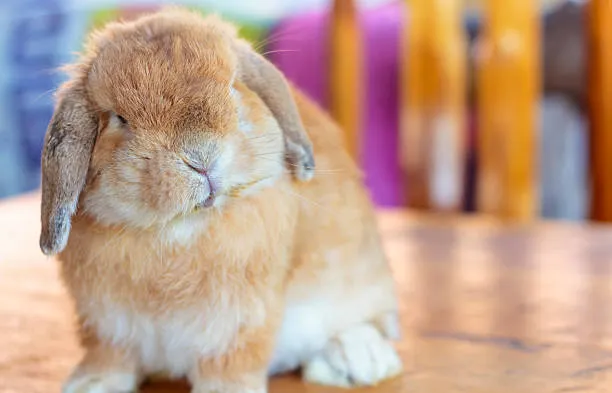
Aside from being sought after due to their physical appearance, they are also highly valued for their sweet nature as well as their low maintenance. It is important to comprehend the most crucial traits of Holland Lops for anyone who wants to adopt, breed, or take proper care of them.
Holland Lops were first bred in the middle of the 20th century and afterwards became extremely popular globally due to their pleasing appearance and docile nature. They are friendly, have a peaceful temperament, and also easily adjust themselves to different home conditions.
Whether they are being bred in small backyard commercial ventures, kept as pets, or shown competitively, Holland Lops bring warmth, life, and energy to any room. Their body structure and behaviour distinguish them from the other dwarf rabbit breeds.
The History of Holland Lop Characteristics
Holland Lops’ unique features are a result of decades of intentional and unintentional breeding. The breed was created in the Netherlands during the 1950s when Dutch breeder Adriann de Cock wanted to miniaturise the French Lop. He initially bred the large, affectionate French Lop with the small Netherland Dwarf.
Yet because this cross was not yet producing rabbits with the desired floppy ears, he introduced the English Lop to the breeding program to get the ideal ear shape.
Through selective breeding over several generations, de Cock was successful in breeding a rabbit with the small size of the Netherland Dwarf and the lopped ears of the French and English Lops.
The Holland Lop was officially recognised in the Netherlands in 1964 and exported to America in the 1970s. The breed was recognised by the American Rabbit Breeders Association (ARBA) in 1979. Ever since, the Holland Lop has been a best-seller at show rings as well as homes.
Physical Appearance and Size Proportions
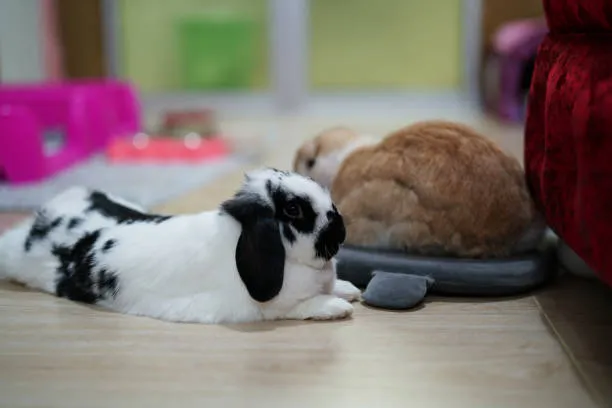
One of the most apparent characteristics of the Holland Lop is how small it is. They are a dwarf breed through and through, and the adult rabbits will typically weigh between two and four pounds. They aren’t small, though – they’re muscular and sturdy, so they do have a solid, balanced appearance.
They are of a “cobby” build, so they are short, stout, with a broad chest and deep shoulders. The most characteristic feature of the breed is the head. The Holland Lop’s head is a flat face with a rounded and broad head, full cheeks that present a perpetual baby look to the rabbit.
The eyes are big, round, and spry, having a warm and curious expression. The ears are lopped and thick and hang down alongside the face and go a bit below the jaw.
Unlike upright-eared breeds, the Holland Lop’s ears are one of the features that contribute to the breed being cuddly and soft in appearance.
The coat is soft and dense and made up of rollback fur that snaps back when brushed. Not only is this feeling great to the touch, but it is also easier to groom than wool breeds.
Holland Lops come in an incredible variety of patterns and colours, including broken patterns, shades, and solid colours. What makes them such a picture and such a visually impressive breed of rabbit today is the combination of their adorable face, fluffy body, and velvety soft fur.
Temperament and Personality Traits
Aside from their looks, Holland Lops are also loved for their personalities. Holland Lops are quiet, gentle, and extremely social. They adore people and can become extremely attached to their owners.
It is not at all uncommon to have a Holland Lop shadow its owner from room to room, sit with them when they are relaxing, or lightly nudge them for petting. The breed thrives on interaction and affection and will prosper in homes where it will be a regular companion.
Although each rabbit is unique, Holland Lops are less high-strung than some of the other small breeds. They are patient and understanding, and therefore a good choice as a family pet with children, if handled nicely and respectfully.
They like to play too. Most of them have happy behaviours like “binkies,” where they jump and spin in the air because they become so excited.
Holland Lops are intelligent and can be taught to learn tricks, to use a litter box, and to come when called by name.
They are curious and need to know their world, and, as such, enrichment like chew toys, obstacle challenges, and freedom-roaming time under adult supervision is beneficial to them. They are adventurous, emotional, and full of personality despite their small stature.
Lifespan and Long-Term Health Outlook
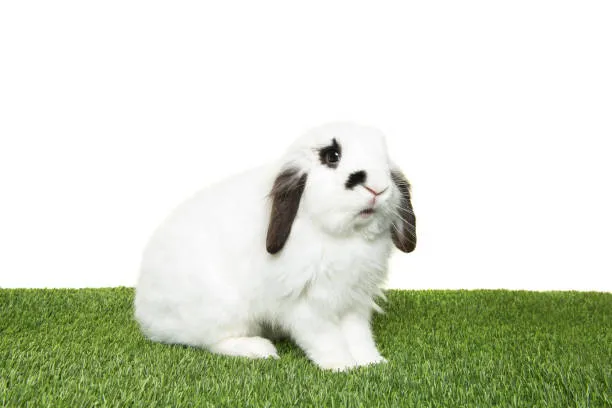
Holland Lops live longer than a rabbit, with the average Holland Lop living seven to ten years under good care. A few Holland Lops, with good genetics, good health care, and stress-free living, have been known to live even more years. This is why they are a longer-time commitment instead of a fleeting novelty pet.
They have a typically healthy picture but are susceptible to some conditions that are typical of lopped breeds and of dwarfs. They can get dental problems if the teeth do not wear down as they should, typically due to misalignment or an unhealthy diet.
The lopped ears also make the ear infection susceptibility greater if moisture or particulate debris becomes trapped. Daily examination by a vet and daily observation assist in detecting these issues at an early stage.
Sterilisation or spaying is strongly recommended to reduce the risk of reproductive cancers and hormonal behaviours. Spayed or neutered rabbits are less violent and easier to breed with other rabbits. Preventive care, i.e., a healthy diet consisting of high-quality hay, neat cages, and mental stimulation, ensures a long and healthy life.
Diet and Feeding Habits
The diet of the Holland Lop is uncomplicated but must be supplied with attention and consistency. The mainstay of their diet at all times must be an abundance of high-quality timothy hay that provides the fibre necessary for good digestive health and gradually wears down their ever-growing teeth.
This hay must be supplied in abundance at all times and changed daily to ensure freshness and cleanliness. Raw vegetables, especially greens, can be introduced when the rabbit is old enough, i.e., three months old. The vegetables add moisture and nutrients and contribute to general wellness.
Seeds and commercial rabbit pellets can be added in small quantities to offer extra vitamins and minerals, but overeating will cause weight gain, especially for a Holland Lop, which is a small breed.
Water intake is also essential. Clean, fresh water should always be supplied through a drip bottle or heavy bowl. Hydration enables the proper functioning of the organs, skin health, and heat management.
Avoid foods with sugars and packaged food that can lead to gut imbalance and dental and metabolic issues. A balanced, natural diet keeps Holland Lops active and healthy over the years.
Grooming Needs and Habits of Maintenance
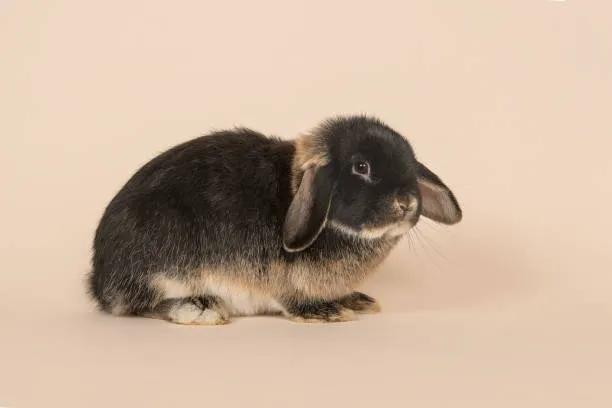
Holland Lops have short to medium-length coats, which are easy to groom but dense. Grooming will minimise the opportunity for matted coats and hairballs to form.
Brush once a week, but this must be supplemented during shedding seasons, spring and fall. Grooming also helps the rabbit bond with the owner, as well as keeping their coat in the best of health.
These rabbits will never require baths and should never be placed into water, as they will become severely stressed and even shocked.
Spot cleaning can be accomplished with a damp cloth or baby wipe if cleaning is required. Trimming will need to be accomplished every few weeks in order to prevent overgrowth and damage. Ears must be monitored regularly for infections, particularly as their down position will hide wax buildup or irritation.
Cleanliness is a key to overall health. Bedding should be replaced, litter boxes emptied daily, and around them kept dry and clean. A clean rabbit is a healthy rabbit, and cleanliness also contributes to longer life and fewer illnesses.
Behaviour in Multi-Pet Homes and Bonding
Holland Lops are able to thrive in many home settings, ranging from families with other pets to homes. They can peacefully live with quiet cats and dogs if they are introduced correctly and safely.
Their small stature, however, means that they need protection, so watching them is always a good option. Observing their body language and personal space reduces fear and stress behaviours.
Bunnies tend to form attachments to their species, and Holland Lops will be very friendly with a same-sex partner (both spayed or neutered).
A bonded pair can live together, groom each other, and comfort each other psychologically, reducing loneliness and stress. Bonding has to be slow and patient, with the use of neutral zones and watchfulness for aggression.
In families where other animals are not present, human companionship is even more significant. Holland Lops require daily mental and emotional stimulation.
Holland Lops will become depressed, lose their appetite, and get bored if left alone for extended periods of time. Handling, light playtime, and challenging toys are all part of their daily life.
Why Holland Lops Are Different from Other Breeds
There are a lot of rabbit breeds, yet none possess the Holland Lop’s ideal combination of traits. They are compact enough to happily reside in an apartment, gentle enough to make a great family pet, and endearing enough to charm the heart of any animal lover.
Compared to the larger lop breeds, Holland Lops are simpler to handle and maintain. Compared to other dwarf breeds, they are more relaxed and more affectionate.
Whether you’re seeking a cuddly lap companion, an engaging pet for a child, or a show-quality rabbit with eye-catching features, the Holland Lop delivers.
Their temperament, looks, and adaptability make them a top-tier choice for rabbit enthusiasts of all experience levels. Understanding their characteristics helps set the stage for a successful and rewarding relationship that can last a decade or more.

